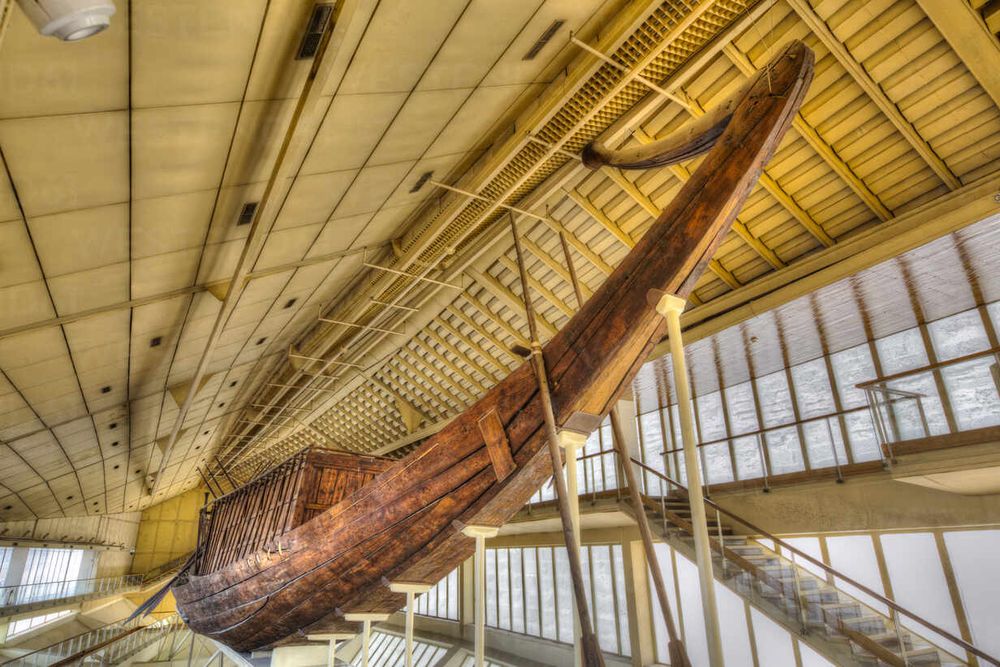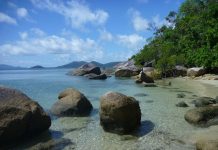Cairo is an Arab city that enjoys a remarkable standpoint among other cities of the world. It goes deep in the human cultural history. Cairo occupies a unique site that enabled it to exchange culture with other civilizations. Now, it constitutes a cross point of Arab and Islamic cultures. Beside its ancient glories, modern Cairo reflects the great renaissance achieved by Egyptian people.
Cairo is the only city in the world that hosts antiquities of four civilizations: Pharaonic, Romanian, Christian and Islamic.
Pharaonic Cairo
It is a human and urban entity that always moves with life. The site of this city goes back long before it was named Cairo. It started at the west bank of the river Nile, at about 4225 B.C.
Inhabitants of the eastern district of the Delta chose a location that lies a few miles away from the northern part of Cairo. It is the ancient “Oun” town known by Greek as “Heliopolis”. Now it is named by Cairenes as “Ain Shams”.
That city witnessed the flourishing of astrology, medicine and engineering. It became a significant center to the ancient religions. Revolution of knowledge developed on the Nile banks. Ancient Egyptians could discover the natural phenomena laws. As for agricultural processes, they set the agricultural solar chronology that divides the year into its four seasons with great accuracy.
When “King Mena” ruled Upper Egypt, he successfuly united lower and upper Egypt. Mena established a new capital called “Menf” that lies at about 22 km,away from the south of Cairo. That city was known as “the White Wall” up to the 26th century B.C. Later, Egyptians came to call it “Men Nefer”, the same name was changed by the Greek to be “Memphis”.
Islamic Cairo
The Islamic era in Egypt was generally the golden age for arts and architecture. Examples of such revival can be seen in the building of several mosques, fortresses and city walls, in addition to the flourishing of decorative arts.
They were most evident in the construction of al-Fustat, the first capital of Egypt, where Amr Ibn el-Aas built the first mosque in the country.
The Nile meter on the island of Rodha in modern Cairo, built by Abbasid Caliph al-Mutawakel Billah in 245 AH, is known to be the oldest Islamic monument in Egypt.
The Fatimid period also witnessed the development of local Islamic architecture. Al-Azhar, al-Anwar and Al-Aqmar mosques are famous examples of Fatimid architecture in Egypt.
Al-Geoshi Mausoleum is a model for dome structures and mosques built around the tombs of eminent men of religion.
During the Ayyubid period, further advances were made in the field of architecture. Salah ed-Din’s (Saladin’s) Citadel still stands out as a lofty, striking example of Islamic architecture. The Mamelukes were no less advanced in this field. They also left behind a great wealth of finely designed and decorated mosques, domes, mystics’ houses, palaces, schools, khans (inns), fortresses and public drinking fountains.
Most notable arts of this period were wood engraving and ornamentation, assembled dove tailed and lathed wood work. Islamic style textiles, porcelain and stained glass were also widely known during this period.
Modern Cairo
By virtue of all his up-to-date all encompassing reforms, Muhammad Ali is truly considered the founder of Modern Egypt. He encouraged and sponsored men of learning, scientists and artists. He built a powerful army as well as a military academy. A ship building industry was started in Boulaq, Cairo together with a shipyard in Alexandria.
He specially attended to the administration of government affairs. During the first half of the 19th Century, a full-scale economic revival was in full swing. Special attention was given to agriculture and irrigation, where barrages, dams and canals were built.
In industry, Muhammad Ali adopted a policy of dispensing foreign-made products, and creating national factories and plants to meet the needs of the army and the public.
In trade, he sought to provide security for internal trade routes and create a foreign trade fleet. During his reign, trade flourished.
At the same time, Muhammad Ali was enthusiastically interested in spreading education to cater to the government ‘s manpower needs. Schools of various levels and specialties were built and educational missions were sent to Europe to transfer modern sciences to Egypt.
After his death, Muhammad Ali’s successors tried their best to follow his suit by attempting to catch up with European civilization. During the reign of Khedive Ismail, Egypt witnessed an awakening administrative reform, while agriculture, industry, construction and architecture prospered.
His most notable achievement was the establishment of the Opera House, railroads and the Suez Canal which was opened to international navigation in 1869.
During the 19th Century was one of enlightenment, rediscovery of the Egyptian power system and development of human wealth. By the end of the century, Egypt witnessed many revolts against the foreign intervention.
The nationalist movement grew stronger and several popular revolts took place. However, the Orabi Revolution (1882 AD) ended up with Egypt being occupied and declared a protectorate by Britain in 1914. Accordingly, Egypt officially broke off from Ottoman suzerainty.
Thus, Egypt entered the 20th Century under the British colonialist rule that plundered its resources. Popular resistance and national movements soon escalated under the nationalist leaders: Mostafa Kamel, Muhammad Fareed and Sa’ad Zaghloul, leading the 1919 Revolution calling for independence. The British occupation of Egypt came to an end and the country was declared as an independent state in 1922. The first Egyptian Constitution was issued in 1923.
Later, a period of economic revival led by the great nationalist economist Tala’at Harb emerged which led to the establishment of an industrial, productive and services base in all sectors of the economy.
Memphis and Saqqara
Memphis
Memphis, the oldest capital of Egypt, was built by King Menes, and lies 24 kms south-west of Cairo, in Al Badrasheen. What to see in Memphis.
• The colossal statue of Ramses II., exhibited in the museum. This is the most beautiful representation of Ramses II. It is made of fine-grained limestone, 13 metres long, and weighs 120 tons.
• The Temple for Embalming the Sacred Apis Bull, which shows the various steps of embalming.
• The Alabaster Sphinx of King Tuthmosis III.
Saqqara
Saqqara is the oldest Ancient Egyptian cemetery. It lies on a desert plateau, south-west of Cairo. Above rises the step-pyramid and mortuary compound, built by the engineer Imhotep for King Zoser the first of the III Dynasty pharaohs. It is of the mastaba-type. The pyramid is composed of six receding mastabas on top of each other.
The later pyramid builders developed this concept into the familiar even-sided pyramids. The step-pyramids measures 123.5 by 107 ms, at the base and about 59 ms in height.
Important Sights of Saqqara
The Pyramid of Unas
South of the Step-Pyramid, lies the Pyramid of Unas, last of the V Dynasty pharaohs. This pyramid is noted for its tomb chamber, whose walls are inscribed with what is known as the “Pyramid Texts”, and whose ceiling is decorated with stars that seem to sparkle above the royal mummy. Near to the Pyramid of Unas lies the Persian Shaft, a tomb of XXVI Dynasty known as the “Persian Dynasty” The Shaft is 25 ms deep and at the bottom lie several tomb chambers.
The Mastabas
Saqqara is noted for the mastaba-type tombs of the nobles, the most prominent of which are the tombs of V and Vl Dynasty nobles. The tomb walls bear inscriptions showing the daily life of Ancient Egyptians, such as: farming, animal breeding, hunting, as well as religious rites and the offering of sacrifice to the dead.
The most important mastaba tombs of the nobles are:
The Mastaba of Ptah-Hotep
Lies south-west of the Step-Pyramid and contains numerous mural paintings and inscriptions portraying daily, religious and funerary rites, as well as religious texts. The most important scene shows Ptah-Hotep a renowned Pharaonic philosopher- being entertained by a band of musicians.
The Mastaba of Kagemni
This tomb is noted for its mural reliefs especially the scene of bird hunting.
The Mastaba of Mereruka
Contains 33 chambers, the walls of which are filled with inscriptions portraying scenes from daily life, farming handicrafts, hunting. One important scene shows the veterinary treatment of animals.
The Serapeum
Only the lower corridors remain, measuring several hundred metres, in length, and containing the tombs of the sacred bull, Apis. It was first begun by the XVI I Dynasty. Close to the Serapeum lies the Greek Philosophers Circle, which contains statues of Plato, Heraklites, Pythagorean and Pindar.
The Pyramids of Giza
They are situated about 10 kms from Cairo, and comprise:
The Great Pyramid
The most famous structure in the world was built by King Cheops (IV Dynasty) around 2650 B.C., on an area of 13 feddans. Its height now is 137 ms (original height: 146 ms).
Almost 2.5 million blocks of stone were put into building this pyramid, which measures 230 ms square at the base. All this, however, dwindles when compared to the precision and astounding ability of the ancient Egyptian in building this pyramid. Close to the eastern flank of the Pyramid of Cheops lie three small pyramids dedicated either to his wives or family members.
The Second Pyramid
Built by Kephren, south-west of his father’s pyramid though lower in height: 136 ms, it still retains, on some of its upper parts, the remains of the limestone that had once covered it all. At the base, it measures 215.5 ms square.
Its interior is simple, with two entrances on the north side. The Second Pyramid, like all other pyramids, had an exterior covering of fine-grain limestone. Now, only a small part of this covering remains.
The visitor can also still see the remains of his mortuary temple, the Temple of the Valley, and rising causeway. These temples witnessed the religious rites during the embalming of the body.
The Third Pyramid
Built by Mycerinus (Menkaure), south-west of the Great and Second Pyramids. It is much smaller than either one (62 ms). It is distinguished by the fact that the lower part of its sides still retain their granite slab coverings.
The Ancient Egyptians, it must be noted, built the pyramids to be tombs to preserve the bodies of their dead kings, especially that they believed in resurrection and immortality. The three Pyramids of Giza are surrounded by several small pyramids, and hundreds of mastaba-tombs of the royal family, nobles and high-ranking people.
The Sun Boats (The Boats of Cheops)

The Ancient Egyptians carved spacious areas in the rock, near the Pyramids. There they placed wooden boats, to be at the disposal of the King when he went on his journey of Day and Night with the sun god, Ra, in the after world.
Early excavations have discovered three such sun boat sites, on the east side of the Great Pyramid. Two other sites were discovered on the south side. When the huge stone slabs were removed, they revealed parts of a large boat, made of cedar wood, in very good condition. There were also other implements, such as oars, ropes and a kiosk for sitting. The boat was 43.5 ms long, the prow and stern were 5 ms and 7 ms high respectively. The boats are now housed in a special museum, south of the Pyramid of Cheops. The museum is open from 9-4 daily, for a fixed fee.
The Sphinx
On the way to the Temple of the Valley, (of the pyramid of Kephren), lies the large statue of the Sphinx. It is one of most famous monuments in the whole world. It is, indeed, a legendary statue for it has the body of lion and the face of a man. It is 70 ms long and 20 ms high.
Scholars and scientists are of the opinion that the face of the Sphinx closely resembles that of King Kephren. The Sphinx, and the Three Pyramids, are regarded as one of the Seven Wonders of the World. A small fee is to be paid when visiting the Pyramids area.
Christian Monuments
Most of the old churches are located in the Old City on the ruins of the Fortress of Babylon.
AL-Kaneesah Al-Mu’allaqah Church (Hanging Church)
Dating to the late 4th and early 5th Century, this basilica was named “Al-Mu’allaqah” because it was built on top of the south gate of the Fortress of Babylon.
Church of Abu Sergah (Church of St. Sergius)
Dating back to the beginning of the 5th Century, this basilica is built on the cave in which the Holy Family stayed and is regarded by visitors as a source of blessing.
Church of Sitt Barbara (Church of St. Barbara)
Founded in the 5th Century, it was rebuilt in-the 10th C. and still retains its wooden door which constitutes a magnificent example of fine art.
Church of St. Mina
Located in the Old City, it was built in the 6th Century AD.
Church of Al-A’dra (Church of Virgin Mary)
Dating back to the 8th Century, this church contains some precious icons and has three haykals behind ivory-inlaid wooden screens.
Church of Virgin Mary in Zaytoun This church gained special significance after the appearance of the Apparition of the Virgin above one of its domes.
The Cathedral of St. Mark
This, the largest church in Africa, was built recently in Abbassia and reflects the evolution of the art of architecture. The remains of St. . Mark, the first to preach Christianity in Egypt, were moved to this Cathedral.
Church of Marie Guirgis (Church of St. George)
Built on the ruins of an ancient church, this basilica has a unique hall dating to the 3rd Century AD. The Virgin’s Tree This is the tree where the Virgin rested with the Child Jesus when they came to Egypt.
Islamic Monuments
Mosque of Amr lbn Al-‘Aas (Al-Fustat)
It was the first mosque built in Egypt. It is simple in design and represents schools of architecture from different periods. Mosque of Ahmed Ibn Tuloun The third mosque built in Egypt, it is characterized by its spacious grounds and its unique minaret, spiral, and a large collection of gypsum decoration.
Al-Azhar Mosque
The first Fatimid mosque in Cairo, it was founded in Midan Hussein by Gawhar al-Sikilli in 971 AD (361 H) as both a mosque and Madrasah (school), after Fatma al-Zahraa, the daughter of the Prophet Mohammed. It is considered to be the oldest Islamic University, the first lecture having been delivered in 975 AD.
Mosque of Al-Mu’ayid
Located in Al Mu’ez St., Gammaleya, it was built in 1474 AD (823 H), its minaret rising above one of the City gates built in 1091 AD. Mosque and Madrasah of Sultan Hassan Located at the end of Al-Qala’ (citadel) St., it was founded by Al-Malek Al-Nasser Hassan Bin Mohammed Ibn Qalawon to be a mosque and madrasah for the four schools.
The Blue Mosque
Located in Tibbanah Street, it was founded by Prince Aqsunqur Al-Nassery in 1347 AD. It was so named because of the splendid blue mosaic on its walls.
The Alabaster Mosque (Mosque of Mohammed Ali)
It was built in 1830 AD (1246 H) on the northern elevated part of the Citadel, visible to all parts of Cairo. It was so named because its walls are faced with alabaster on both sides.
Other Islamic Monuments
Fortress of Salah al-Din al-Ayyubi (The Citadel)
Built by Salah al-Din al-Ayyubi in 1183 AD overlooking the city of Cairo from the Muqattam Hills, it houses a number of important monuments including the Mosque of Soliman Pasha, the Alabaster Mosque, the 90-meter deep Bir Yusuf (Joseph’s Well) and Al-Gawhara Palace.
House of Al-Seheimi
Located in Darb al-Asfar, it was founded in 1796 and constitutes another example of Islamic architecture.
House of Gamal al-Din al-Dhahabi
Located in Al-Ghoureya, it is an example of Arab buildings of the early 17th Century AD.
Attractions of Modern Cairo
National Cultural Center (Opera House)
The new 7-story opera house at the Gezira Exhibition Grounds was inaugurated on 3.10. 1988. Designed by a team of Japanese and Egyptian architects, it is an architectural masterpiece of Islamic design. It is equipped with the most sophisticated audio-visual system and comprises:
The Second Theater is also a closed hall comprising 500 seats and is used for various purposes including film festivals and conferences.
The Third Theater is an open one comprising 1000 seats. There are other halls, some of which are used for training and rehearsals, in addition to the Museum and the Library containing references pertaining to the most significant artistic works.
Cairo International Center for Conferences ( CICC )
Located in Nasr City, it comprises three main conference halls, a fourth for receptions and a fifth for exhibitions. In addition, there are fully-equipped secretarial offices and press center.
– Main Hall: 2,500 sq.m., 2,500 seats.
– Second Hall: 840 sq.m., 800 seats.
-Third Hall: 900 sq.m., 600 seats.
-Receptions Hall: 1,600 sq.m.,1,250 seats.
-Exhibition Hall: 2,500 sq.m.
For information Tel. (202)2634637
Fax. 2634640
Cairo Tower (Gezirah)
Over 180 meters high, it is the most outstanding attraction of modern Cairo. The first of the top two stories has a rotating restaurant and cafeteria. Visitors can enjoy a panoramic view of Cairo from the observation platform.
Sound and Light Show
In an enchanting atmosphere, with sound, light, and music, the show captivates audiences and makes re-live ancient times, the history of the Pyramids and the glory of the Pharaohs. The show is presented in six languages: Arabic, English, French, German, Spanish, and Italian.
The Egyptian Museum (Tahrir Square)
It is regarded as one of the most prominent museums in the world for it offers visitors a chance to aquaint themselves with Egypt’s ancient history over a period of 50 centuries. Its most significant showpiece is the magnificent Tutankhamun collection.
The Coptic Museum (Old Cairo)
The museum houses a rare collection of ancient Christian relics including remains of architectural works, textiles, icons and old manuscripts reflecting the history of Coptic civilization.
The Museum of Islamic Art (Bab al-Khalq Square)
It is regarded as the largest museum in the Middle East, housing 80,000 rare objects dating from the dawn of Islam to the Ottoman period.
The Military Museum (the Citadel)
The museum displays a magnificent collection of ancient weapons, statues, and uniforms in addition to other exhibits designed to show the art of warfare in Egypt from the earliest times. There are other museums and modern landmarks in Cairo that are also worth seeing.
Public Gardens / Parks
There are several spacious parks in Cairo including the Zoological Gardens in Giza, the Andalusian Gardens overlooking the Nile, the Kanater Al Khaireya Gardens (the Good Barrage), about 25 kms from the capital, the Fish Gardens in Zamalek and the International Garden in Nasr City. The Azhar park .
Al-Azhar Park
If you had to choose one color to symbolize Cairo, it would probably be brown: the color of desert sand, camels and centuries-old buildings. The opening of Al Azhar Park came as a refreshing addition to an otherwise monochrome city, with more green than people have seen in a long time.
As you walk through the gates of this 30-hectare park you’re greeted with wide-open spaces, sloping grassy hills, rows of trees, blossoming orchards and amazing views of the city. Away from the usual hustle and bustle -a striking contrast to the rest of Cairo-visitors will be pleased to find a lot of room to walk, run and just breathe.
A wide variety of plant life has taken root in the park, some of which are exotic botanicals, others more local; many species are especially suited to Egypt’s dry climate.
Around two-thirds of the park is covered in vegetation. The hill’s soil, which is high in salinity, had to be improved to allow plants to flourish.
Looking across Al Azhar Park, you see the cities of the living and the dead stretching off into the distance, the walls of the citadel and the dames of the Muhammad Ali Mosque. As you look off to the west, the city drops below the horizon, leaving only a surreal panorama of scattered minarets floating behind a grassy foreground.
The park, the largest of its kind in the Middle East land Africa, heralds the return of open green space to a city long buried under jumbled concrete buildings, multi-lane freeways and high-rise towers. The last lime Cairo saw a public park of this size in the city proper was during the days of the khedives.
The lay-out of the park complete with two palace-like complexes recalls the decadence of the sultans. Like its predecessors, Al Azhar Park was made possible by the generosity of an extremely wealthy philanthropist: the Aga Khan, spiritual leader of the Ismaili Muslims. In 1984, the Aga Khan decided to give a gift to the city of his Fatimid ancestors, who founded Al- Qahira in 969.
The lack of green space and pure oxygen for Cairenes had been noticed by the Aga Khan Trust for Culture (AKTC), and so was born a massive and the foot of El-Darassa; other visitors have to Park is a modern ambitions project to transform the garbage heap at Cairo’s eastern edge into a park. The mission eventually turned into a development project aimed at revitalizing a whole community. The Historic Cities Support Program (HCSP), a branch of the AKTC, selected the site of El-Darassa, bordered by Al Azhar and Sa1ah Salem streets, which is surrounded by the most-visited historic sites in Islamic Cairo.
“This is the largest project of the Historic Cities Support Program,” says Stefano Bianca, director of the program. The director notes that in combining the creation of a public park with an integrated community development scheme, the project will inspire change in Islamic Cairo. “It was a revolutionary idea to use a landscaping project as an engine for a rehabilitation process,” he says. “This changed the face and fate of the old city.”
The project is meant to be a park for the people, says Mohammed El-Mikawi, executive manager of Aga Khan Cultural Services in Egypt. Organizers hope community members, tourists and Egyptians from every corner and alley will bask in its cool shade. There is a visitors’ center featuring detailed interpretive boards and panels with historical background on Islamic Cairo.
Admission is low for residents of the nearby Darb Al-Ahmar, the triangle-shaped neighborhood at the foot of El-Darassa; other visitors have to pay about LE 5. Organizers hope that with between 1 million and 2 million visitors each year, the park will eventually be able to sustain itself and revive the economy of the surrounding community. Public performances will occasionally be held in the park’s many outdoor venues.
More than just an open space, visitors will find a variety of dining options including the five-star Hilltop Restaurant, with a Fatimid-inspired design.
A more informal eatery, the Lakeside Pavilion cafe, makes use of traditional masharabiyya screens and is nestled among orchards overlooking the lake and fountain. There is also a branch of Egypt’s French cafe chain Alain La Notre.
While Islamic Cairo is one of the top tourist destinations in Cairo, there are zero options for accommodation in the area. This is something the Aga Khan Foundation would like to change. They hope to propose a budget, hostel-style accommodation in Darb Al-Ahmar. In this way, visitors will develop a closer relationship with Islamic Cairo.
Maher Stino of Sites International, one of the main architects for the park, says the design gives Islamic architecture a modern twist. “What we have tried to do with the park is to have a real relationship with its Islamic context, not just mimic it,” says Stino.
An underground wall
It is ironic that the park’s greatest advantage – its elevation – is the result of a much less desirable hill of ancient garbage. A new chapter in the story of the growing mound of debris began when excavations for the park commenced. Workers un-earthed a buried treasure during their digging: 1.3 kilometers of the old city wall dating back to the 13th century.
Since the city’s earliest days, it had been standard practice to deposit trash and the remains of demolished buildings at the edges of the city. The wall, which was built in the Ayyubid period, had seen centuries of residents tossing debris over its sides, until finally the structure was consumed by the growing hill. The heaps of fill reached their peak during the Mamluk period -the French traveler They have not wrote in the mid-1600s that the rubbish already hid the walls of the old city. This particular section is apparently the only place where people did not move to live on the other side of the wall, but left the shadow of the garbage pile to loom over them.
Now 1,500 meters of the wall, which forms the eastern border of the old city, are visible. From the 1 million cubic meters of ancient refuse removed, excavators have found 12th-century inscriptions, pottery and coins.
Discovering the wall was an unexpected bonus for the Aga Khan team. Project officer Francesco Siravo says the wall is now an integral part of the project’s work and will be a focus of the interpretive center. Inside the wall itself, visitors will be able to wind their way through its towers and interior galleries.
The wall is actually only the portal into the many other treasures of this historic district. In Darb Al-Ahmar, there are 65 monuments registered by the Supreme Council of Antiquities, and several more unregistered but significant buildings. Part of the overall Al Azhar Park project involves restoration work on several other monuments in the area.
In collaboration with the New York-based World Monuments Fund, the AKTC is also restoring the 14th-century Umm Sultan Shaaban Mosque, whose minaret showed cracks and had partially collapsed after the 1992 earthquake.
The 13th-century Khayrbek complex, which includes the Palace of Alin Aq, the Khayrbek Mosque and the Ottoman-era Sabil Kuttab will be made functional again as a recreational and cultural center.
Since opening in summer 2004, the park’s success proves that Cairo was in dire need of an open space. Al Azhar Park has restored the bloom to an age-old city.
It is ironic that the park’s greatest advantage -its gays the wall is now an integral part of the project’s (02) 575-0600 elevation -is the result of a much legs desirable work and will be a focus of the interpretive center.
In hill of ancient garbage. A new charter in the story gicle the wall itself, visitors will be able to wind their of the growing mound of debris began when ex- way through its towers and interior galleries.
Cairo shopping centers
Shopping centres in and around Cairo appeal to most visitors. Egyptian products are so varied and meet various tastes and different levels of income. These centers or souks (markets) provide quality which rivals International standards. Among the most attractive centres are the following:
The Khan Khalili Bazaar and Sagha (goldsmiths ) area
Comprising an array of shops dating to the 14th Century AD, Khan Khalili is renowned for its indigenous character and the magnificent variety of gold and silver works, embroidered clothing, leather goods and ivory-inlaid woodwork in addition to the many other attractive handicraft.
Haraneyya
Is the main center for hand-made carpets. Shopping centers are also available in some major hotels and in center and outskirts of town. These sell silk, cotton and wool textiles as well as leather goods including shoes and bags.
In addition to the private sector boutiques, there are public sector stores such as Gategno, Sednaoui, Omar Effendi, Chemla, Cicurel, Benzion, Dawoud Addes and Hannaux.
Kerdasa
Is famed for its embroidered cotton and silk dresses (galabeyas) as well as other hand-made products.




























